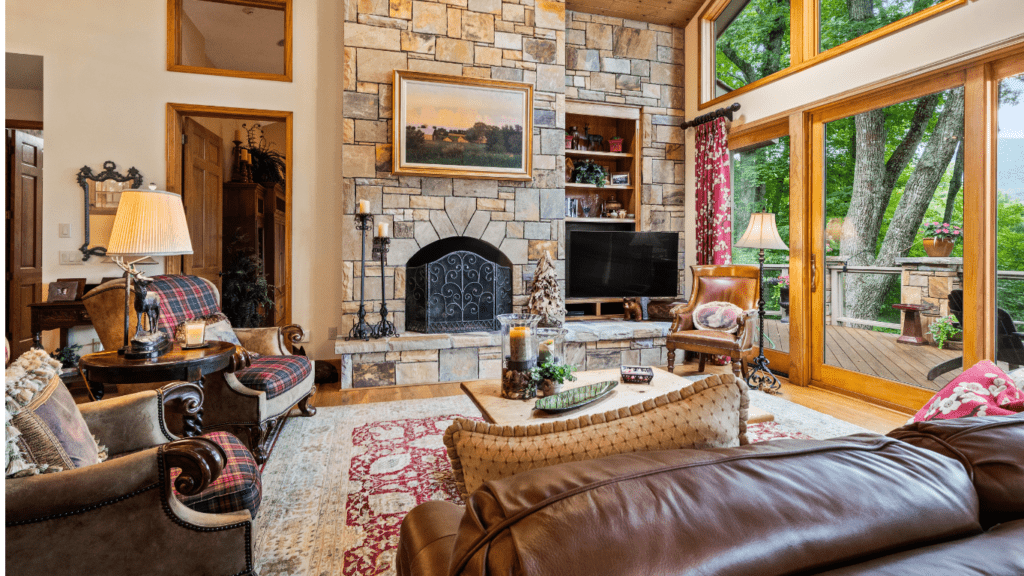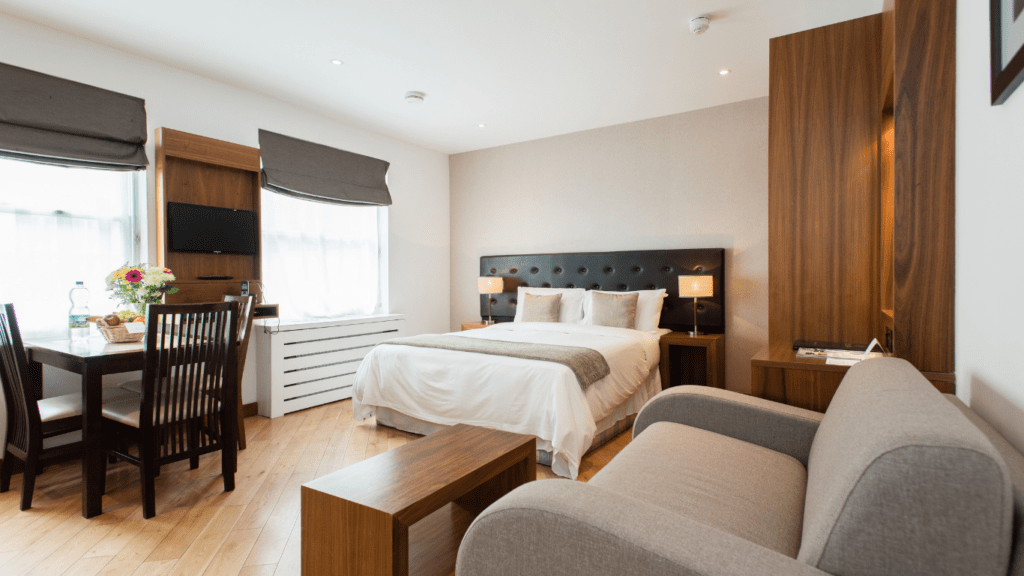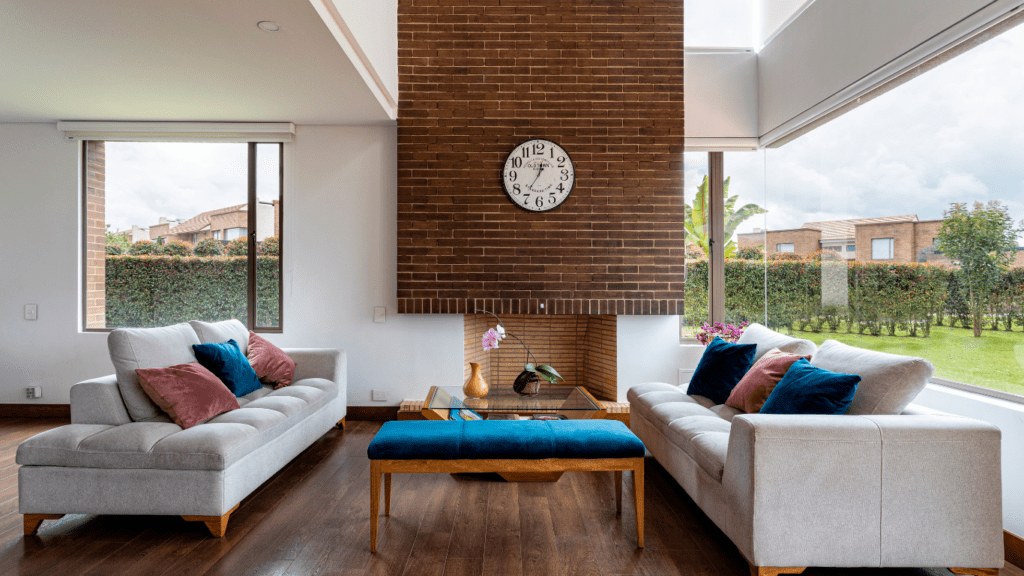Overcrowding A Space
Overcrowding significantly impacts the comfort and functionality of a room. Understanding how to avoid this common mistake can enhance a space’s overall feel.
How It Happens
Overcrowding occurs when too much furniture fills a room, making it difficult to move easily. Adding excessive pieces, like extra chairs or tables, creates a cluttered appearance. Another reason is not considering the room’s layout and area when selecting furniture. Large items in small rooms or too many decorative elements result in a cramped space.
How To Fix It
To fix overcrowding, start by removing unnecessary furniture. If an item isn’t serving a functional or aesthetic purpose, consider storing or donating it. Opt for multi-functional furniture, like ottomans with storage or foldable desks, to maximize space. Measure the room and choose furniture appropriately sized for the area. Ensure pathways are clear and maintain a balanced arrangement by strategically placing focal pieces and keeping decor minimal.
Blocking Natural Light
Improper furniture placement often obstructs natural light, affecting the room’s ambiance. Addressing this issue improves both the look and feel of a space.
Common Mistakes
- Placing Large Furniture in Front of Windows: Couch corners, tall bookshelves, and bulky armchairs frequently block light sources, creating dark areas inside.
- Ignoring Window Heights: Placing furniture pieces too high or too low in comparison to window frames (like high backs of sofas or tall wardrobes) reduces effective daylight inflow.
- Forgetting Light Pathways: Obstructing the direct path of light with large items, such as dining tables, dining chairs, and oversized plants.
- Reposition Furniture: Move large furniture items away from windows. For example, consider placing a low-profile piece like a bench below the window sill.
- Opt for Glass or Transparent Furniture: Use glass tables or acrylic chairs to maintain an open feel and allow light to pass through freely.
- Utilize Mirrors and Reflective Surfaces: Position mirrors across from windows to bounce light around the room and enhance brightness without additional electrical lighting.
Strategically arranging furniture avoids blocking natural light. Embrace these solutions for a brighter, more inviting space.
Ignoring Traffic Flow
Ignoring traffic flow in furniture placement causes discomfort and inconvenience in daily use. It’s essential to ensure easy movement through the room.
Identifying The Issue

Traffic flow, the natural path people take when moving around a room, gets disrupted by improperly placed furniture. Common signs include:
- frequently bumped-into furniture
- blocked pathways
- difficulty navigating the space
Effective Fixes
Begin by mapping out the room’s entry and exit points. Arrange furniture to create clear, unobstructed pathways. Place larger furniture against walls to free up central areas. Consider floating arrangements for open spaces to enhance flow without blocking key movement routes. Prioritize accessibility, keeping frequently used items within easy reach.
Poor Furniture Proportions
Inappropriately sized furniture can disrupt the harmony of a room, making spaces feel cramped or overly sparse.
Typical Errors
Typical errors in furniture proportions include choosing oversized sofas for small living rooms and tiny tables for large dining spaces. These mistakes can disrupt visual balance, creating an uncomfortable environment. Rooms with high ceilings often suffer from low-profile furniture that feels out of scale. Another frequent error is placing heavy, bulky items in small spaces, leading to a sense of overcrowding.
Balancing Your Space
Balancing your space involves selecting pieces that fit well within the room’s dimensions. Measure the room and consider the size of existing elements, like windows and architectural features. Opt for furniture that complements the scale of the room. For narrow spaces, choose taller, slimmer pieces to draw the eye upward. In larger rooms, incorporate both large and small furniture to create a cohesive look. Maintain symmetry by pairing sizable items with smaller accents for visual interest.
Neglecting Focal Points
Focal points anchor a room, naturally drawing the eye and creating a cohesive design. Ignoring them can result in a scattered and uninviting space. It’s crucial to highlight these elements for better visual impact.
Recognizing the Problem
First, identify the room’s focal points. These can include fireplaces, large windows, or statement pieces like art or furniture. If these elements go unnoticed, the room feels disorganized. Pay attention to the inherent features of the space. For example, a grand fireplace or an eye-catching window should immediately draw attention. Missing this alignment means the room lacks a clear visual anchor.
Creating Visual Interest
Arrange furniture to highlight focal points. Position sofas and chairs to face these elements. For instance, angle a couch towards a fireplace or create a seating area around a large window. Use accessories like rugs and lighting fixtures to emphasize the focal point. Placing a rug under a coffee table in front of the fireplace or adding spotlights around a piece of art can enhance the room’s appeal. Thoughtful placement ensures the space feels intentional and inviting.



 Betsylie Sheetsin – Home Renovation Expert
Betsylie Sheetsin serves as the Home Renovation Expert at Castle Shelf House, specializing in giving practical advice for both small and large-scale home improvements. With years of experience in construction and renovation, Betsylie understands the importance of blending durability with design. Her insights into home renovation projects, along with expert advice on the latest materials and techniques, empower homeowners to tackle even the most ambitious projects confidently.
Betsylie Sheetsin – Home Renovation Expert
Betsylie Sheetsin serves as the Home Renovation Expert at Castle Shelf House, specializing in giving practical advice for both small and large-scale home improvements. With years of experience in construction and renovation, Betsylie understands the importance of blending durability with design. Her insights into home renovation projects, along with expert advice on the latest materials and techniques, empower homeowners to tackle even the most ambitious projects confidently.
